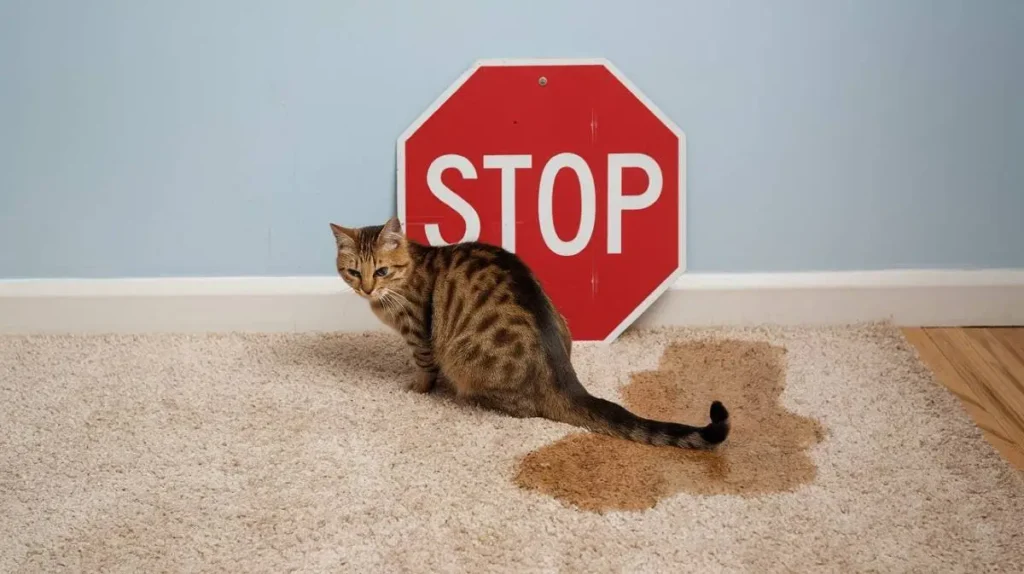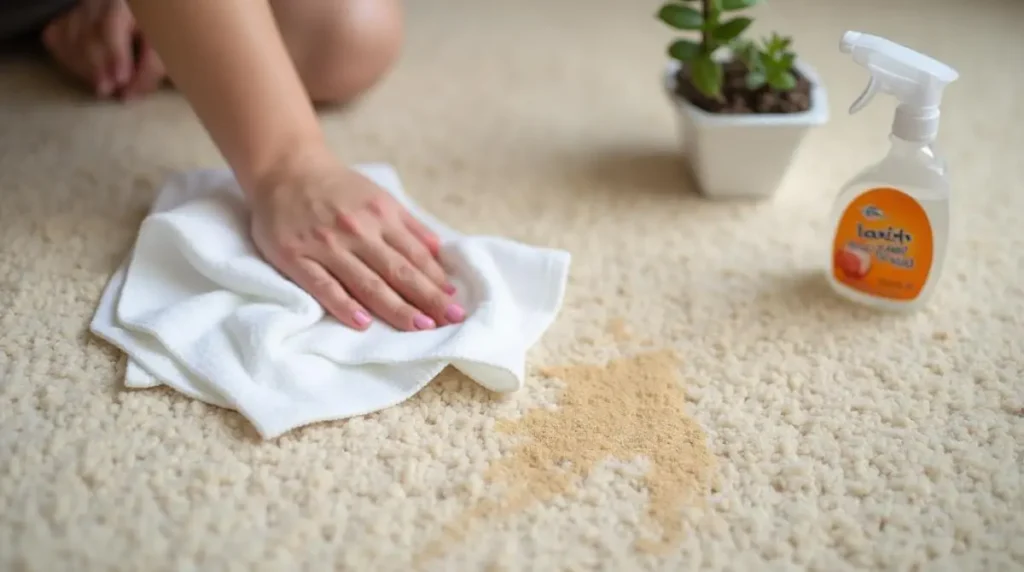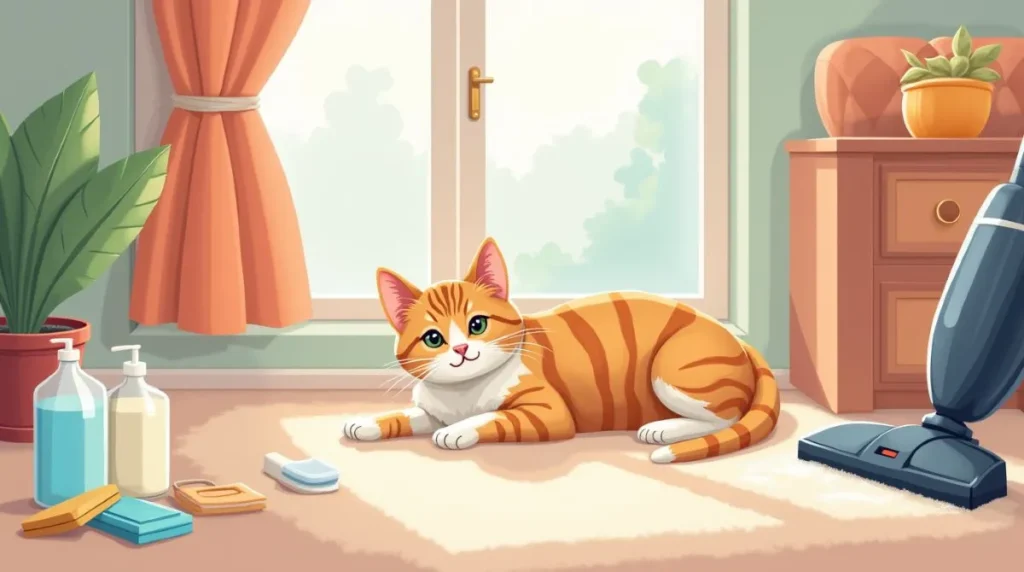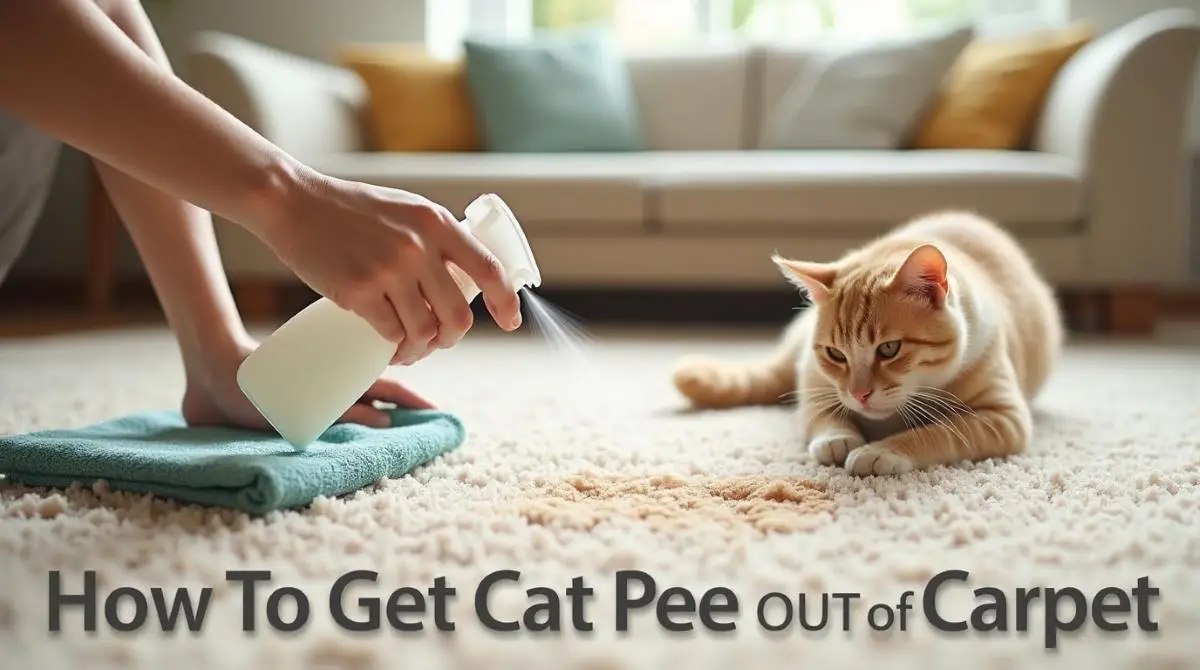Table of Contents
Dealing with cat urine on your carpet can be a frustrating experience, but knowing how to get cat pee out of carpet quickly and effectively can save you time, money, and stress. Whether it’s a fresh accident or an old, stubborn stain, there are proven methods to remove the odor and restore your carpet’s freshness. From using natural household ingredients like baking soda and vinegar to investing in high-quality enzymatic cleaners, this guide will walk you through the best 10 tips to tackle the problem fast. Let’s dive in and help you reclaim your home’s clean and inviting atmosphere!
Why You Need to Know How to Get Cat Pee Out of Carpet
Cat urine on carpets is more than just an unpleasant inconvenience—it can have lasting effects on your home and health. Understanding the importance of addressing this issue promptly will not only save you time and money but also ensure a cleaner, fresher living space. Below are key reasons why mastering how to get cat pee out of carpet is essential.

The Problem with Lingering Cat Urine Smells
Cat urine contains uric acid and other enzymes that can deeply penetrate carpet fibers. Once these compounds settle, they create a persistent odor that lingers long after the initial accident. This smell isn’t just unpleasant; it can attract your cat care to repeatedly mark the same spot, leading to recurring stains. By learning how to effectively remove cat pee, you can eliminate odors at their source and prevent further accidents.
How Cat Pee Affects Your Carpet’s Longevity
Carpets are made from absorbent materials designed to trap dirt and liquids, which unfortunately makes them prone to damage from cat urine. When left untreated, the acidic components in cat urine can weaken carpet fibers, causing discoloration, brittleness, and even permanent stains. Over time, this compromises the lifespan of your carpet. Knowing how to get cat pee out of carpet ensures your flooring remains durable and visually appealing for years to come.
Health Risks of Untreated Pet Stains
Beyond aesthetics, untreated pet stains pose potential health risks. The bacteria and ammonia found in cat urine can become airborne, contributing to respiratory issues, especially for individuals with allergies or asthma. Additionally, damp areas under carpets may foster mold growth if not properly cleaned. Addressing the problem swiftly by learning effective cleaning techniques protects both your family’s well-being and your indoor air quality.
Best Tools and Products for How to Get Cat Pee Out of Carpet
When it comes to tackling cat urine stains, having the right tools and products can make all the difference. From enzyme-based cleaners to household staples, these solutions are designed to break down odors and remove stains effectively. Here’s a breakdown of the best options available to help you master how to get cat pee out of carpet.

Why Enzyme Cleaners Are a Game-Changer
Enzyme cleaners are specifically formulated to target organic matter like pet urine, breaking down uric acid crystals that cause lingering odors. Unlike traditional cleaners, enzymatic formulas continue working even after application, ensuring deep cleaning at the molecular level. Brands like Nature’s Miracle Stain & Odor Remover have been praised for their versatility on multiple surfaces and effectiveness in treating both fresh and set-in stains. Investing in a high-quality enzyme cleaner is one of the most reliable ways to eliminate cat pee from your carpet permanently.
Household Staples Like Baking Soda and Vinegar
If you’re looking for a cost-effective, DIY solution, baking soda and white vinegar are your go-to household staples. This dynamic duo works together to neutralize odors and lift stains naturally. A simple mixture of two cups of white distilled vinegar, two cups of lukewarm water, and four tablespoons of baking soda creates a powerful “Volcano Spray” that can tackle tough pet stains. Sprinkle baking soda on the affected area first, then spray the vinegar solution to activate the reaction. This method not only cleans but also deodorizes without harsh chemicals, making it safe for homes with pets and children.
Absorbent Towels and Vacuum Cleaners You Need
Having absorbent towels on hand is crucial for blotting up as much liquid as possible before applying any cleaning solution. The quicker you soak up the urine, the less likely it will seep into the carpet padding. Once the area is treated, using a vacuum cleaner helps remove residue and restore the carpet’s texture. For pet owners, investing in a portable carpet cleaner like the Bissell Pet Stain Eraser PowerBrush Plus or Hoover PowerDash GO Pet+ Spot Cleaner can provide an added advantage, as they’re designed specifically for spot cleaning and stain removal.
Recommended Brands for Pet Stain Removal
Choosing trusted brands ensures you’re getting effective, tested products. OxiClean Carpet & Area Rug Stain Remover stands out as a top choice due to its Safer Choice ingredients and ease of use. Other notable mentions include Nature’s Miracle and professional-grade enzymatic cleaners like Gone For Good, which contain natural enzymes to neutralize odors at their source. These brands have been rigorously tested and reviewed for their ability to handle even the toughest pet stains, making them reliable options for anyone dealing with cat urine on carpets.
Step-by-Step Guide on How to Get Cat Pee Out of Carpet
Cleaning cat urine from your carpet doesn’t have to be overwhelming. Follow this simple, step-by-step guide to effectively tackle the problem and restore freshness to your home.
Blot Immediately to Prevent Stains from Setting
The first step in how to get cat pee out of carpet is to act quickly. Use a highly absorbent white cloth or paper towels to blot up as much urine as possible. Avoid rubbing, as this can push the liquid deeper into the fibers. For best results, press firmly and repeat until no more moisture transfers to the cloth.
Neutralize Odors with Natural Solutions
Once you’ve blotted the area, it’s time to neutralize the odor. Sprinkle a generous amount of baking soda over the spot to absorb lingering smells. Next, combine equal amounts of white vinegar and water in a spray bottle and gently spritz the affected spot. Let it sit for 5–10 minutes to break down the uric acid crystals that cause odors.
Apply Enzyme Cleaner for Deep Cleaning
For a thorough clean, apply an enzyme cleaner specifically designed for pet stains. These cleaners target the organic compounds in cat urine, ensuring the smell doesn’t return. Spray the solution generously, following the product instructions, and allow it to sit for the recommended time before blotting again with a clean cloth.
Final Steps to Ensure Freshness
After treating the stain, vacuum the area thoroughly to remove any remaining residue. If the smell persists, repeat the process or consider using a portable carpet cleaner for deeper extraction. Regular maintenance and quick action will keep your carpet fresh and free of odors.
Common Mistakes to Avoid When Removing Cat Pee
Even with the best intentions, some cleaning methods can worsen the problem or leave lingering odors. Avoiding these common mistakes will help you clean more effectively and ensure your carpet stays fresh. Here’s what to watch out for when tackling how to get cat pee out of carpet.
Using Harsh Chemicals That Damage Carpets
Many people reach for ammonia-based cleaners or strong detergents, thinking they’ll eliminate odors quickly. However, these harsh chemicals can damage carpet fibers and even exacerbate the smell by attracting pets to the same spot. Instead, opt for natural solutions like baking soda and vinegar or enzyme-based cleaners that are safe for both carpets and pets.
Skipping the Deodorizing Step
One of the biggest mistakes is focusing only on visible stains while ignoring the underlying odor. Cat urine contains uric acid crystals that can remain trapped in carpet fibers, causing smells to resurface over time. Always include a deodorizing step, such as using baking soda or an enzyme cleaner, to neutralize odors at their source.
Not Testing Cleaning Solutions First
Before applying any cleaning solution to your carpet, it’s crucial to test it on a small, inconspicuous area first. Some products may cause discoloration or damage, especially on delicate fibers. This simple step ensures your cleaning method won’t harm your carpet while addressing the stain effectively.
Proactive Tips to Keep Your Carpet Fresh After How to Get Cat Pee Out of Carpet

Once you’ve successfully removed cat pee from your carpet, it’s important to take steps to maintain its freshness and prevent future accidents. These proactive tips will help you keep your carpet clean and odor-free for the long term.
Train Your Cat to Use the Litter Box Consistently
One of the best ways to avoid future stains is to ensure your cat uses the litter box consistently. Place the litter box in a quiet, accessible location and keep it clean at all times. If your cat continues to have accidents, consult a veterinarian or behaviorist to rule out underlying issues like stress or health problems.
Regularly Vacuum High-Traffic Areas
Vacuuming regularly is essential to remove pet hair, dander, and dirt that can accumulate on your carpet. Focus on high-traffic areas where pets spend most of their time, as these spots are more prone to odors and stains. Daily or weekly vacuuming can significantly extend the life of your carpet and keep it smelling fresh.
Invest in a Quality Carpet Deodorizer
Using a quality carpet deodorizer can help neutralize odors and maintain a fresh-smelling home. Look for pet-safe products that are free of harsh chemicals and safe for frequent use. Sprinkle the deodorizer lightly over your carpet, let it sit for the recommended time, and vacuum thoroughly to refresh your space.
Schedule Deep Cleaning Sessions
Even with regular maintenance, deep cleaning sessions are necessary to remove embedded dirt and odors. Consider hiring a professional carpet cleaner at least once or twice a year to give your carpets a thorough cleaning. Alternatively, invest in a portable carpet cleaner for spot treatments and periodic deep cleans at home.
Conclusion About How to Get Cat Pee Out of Carpet
Dealing with cat urine on your carpet can feel overwhelming, but with the right approach, it’s entirely manageable. By acting quickly and using effective solutions like baking soda, vinegar, and enzyme cleaners, you can successfully neutralize odors and remove stains. Remember to avoid common mistakes, such as using harsh chemicals or neglecting the deodorizing step, to ensure lasting results. Whether you’re tackling fresh accidents or stubborn old stains, mastering how to get cat pee out of carpet not only restores your carpet’s freshness but also creates a healthier environment for your home. With these tips in hand, you’re now equipped to handle this challenge confidently and effectively.
FAQs About How to Get Cat Pee Out of Carpet
What’s the first step to take when cat pee is on the carpet?
The first step is to blot up as much urine as possible using a clean, absorbent towel or paper towels. Be sure not to rub the area, as doing so may force the liquid further into the carpet’s fibers.
Can I use vinegar to remove cat pee from carpet?
Yes, vinegar is highly effective for neutralizing odors caused by cat urine. Mix one part distilled white vinegar with two parts water, spray it on the affected area, and blot it up after a few minutes.
Why should I use baking soda on cat pee stains?
Baking soda naturally neutralizes odors and absorbs moisture. Sprinkle it liberally on the damp area, let it sit for 10–15 minutes, and then vacuum it up to eliminate lingering smells.
Do I need an enzyme cleaner for cat urine?
Enzyme cleaners are highly recommended because they break down uric acid crystals and bacteria that cause odors. These cleaners ensure the smell doesn’t return, making them ideal for deep cleaning.
Should I use a steam cleaner on cat pee stains?
No, avoid using a steam cleaner, as the heat can set the odor and make it harder to remove. Instead, use cold water and enzymatic solutions for better results.
What household items can I use to clean cat pee?
You can use a combination of white vinegar, baking soda, and water. These natural ingredients are safe, inexpensive, and effective for removing stains and neutralizing odors.
How do I prevent my cat from peeing on the carpet again?
To prevent repeat accidents, ensure your cat’s litter box is clean, easily accessible, and placed in a quiet location. If the problem persists, consult a veterinarian to rule out medical or behavioral issues.
Can peroxide help with tough cat urine stains?
Yes, hydrogen peroxide mixed with baking soda or vinegar can break down urine salts and kill bacteria. Be cautious when using it, as it may bleach certain fabrics—test on a small area first.
How often should I clean my carpet to keep it fresh?
Vacuum high-traffic areas regularly and schedule deep cleaning sessions at least once or twice a year. For homes with pets, frequent spot cleaning and deodorizing are essential to maintain freshness.
What if the cat pee smell comes back after cleaning?
If the smell returns, it likely means the stain wasn’t fully treated. Reapply an enzyme cleaner or baking soda solution to ensure all uric acid crystals are broken down. Persistent odors may require professional cleaning.

